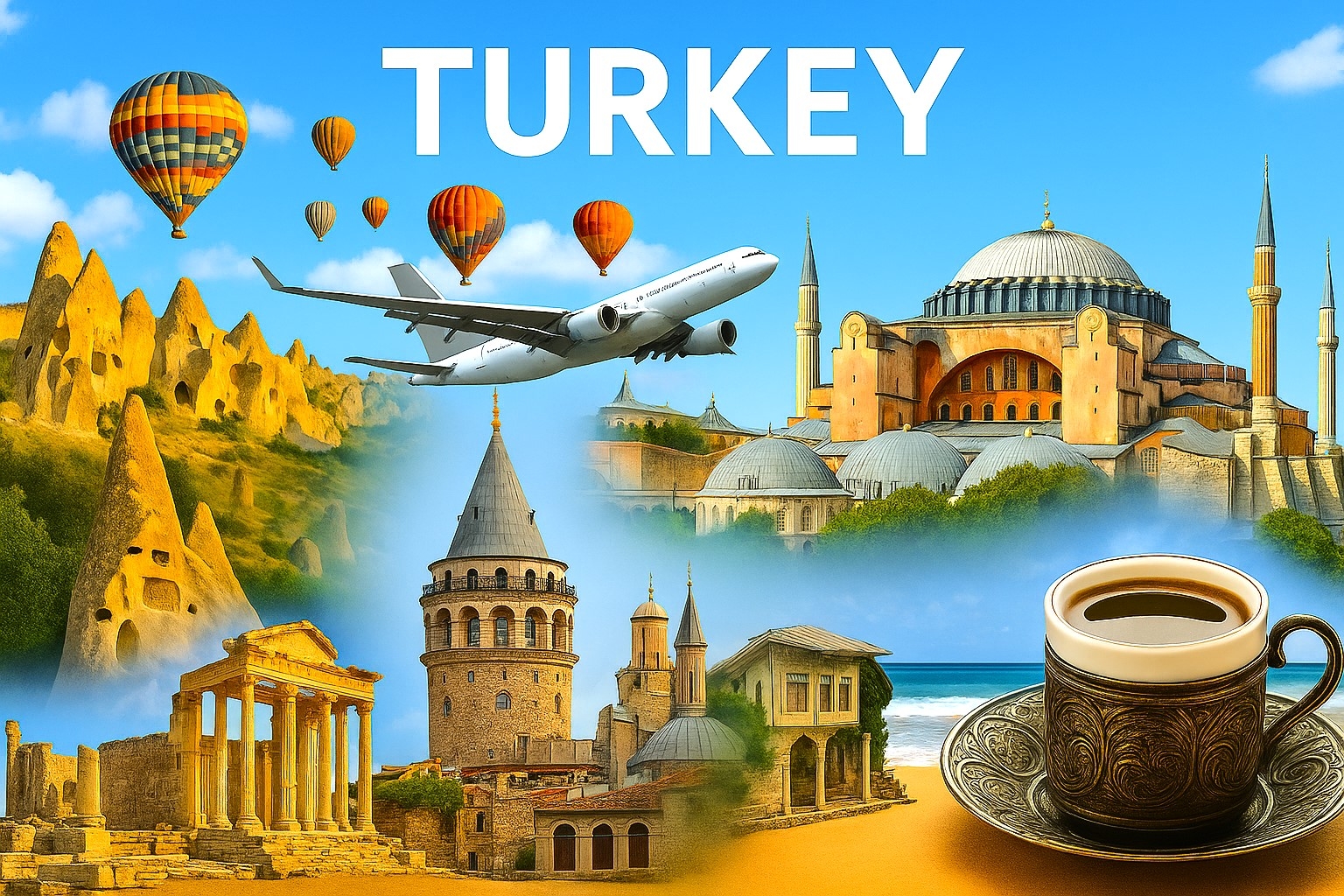In an Age of Drones and AI, Will Human Fighter Pilots Eventually Become Obsolete?
For over a century, the fighter pilot has been the ultimate symbol of national power projection, technological innovation, and military prestige.
From the dogfights of World War I aces to the stealth-dominated skies of the 21st century, human pilots have been seen as irreplaceable—fast-thinking warriors in machines that extend their senses and reflexes.
But as drones, artificial intelligence (AI), and autonomous combat systems mature, the question has shifted from whether unmanned systems will assist pilots to whether they might replace them entirely.
The future of air warfare may be less about human heroics and more about machine dominance. Yet the road to that future is far from straightforward.
The Case for Obsolescence: Machines Don’t Tire, Fear, or Hesitate.
Advocates of unmanned and AI-driven warfare argue that the fighter pilot is already approaching obsolescence. Drones like the U.S. MQ-9 Reaper, Turkey’s Bayraktar TB2, and Iran’s Shahed-136 loitering munitions have demonstrated their effectiveness in surveillance, strikes, and swarming tactics. Unlike human pilots, drones:
Can endure extreme G-forces beyond human physiological limits, enabling sharper maneuvers.
Eliminate risk to human life—loss of a drone is far cheaper politically than a downed pilot.
Process information faster with AI, reacting to threats and opportunities in milliseconds.
Swarm in numbers, overwhelming defenses with quantity and coordination rather than relying on a few high-value manned aircraft.
The U.S. Air Force’s “Loyal Wingman” concept, in which autonomous drones operate alongside crewed fighters, hints at a transitional phase. But the long-term implication is clear: why keep humans in the cockpit at all if machines can outperform them?
The Case Against Obsolescence: Why Humans Still Matter
Yet, writing off the fighter pilot too quickly risks overlooking the enduring value of human cognition in complex, unpredictable combat. AI is powerful, but it is bounded by its programming and training data. Air combat involves not only physics and tactics but also psychology, creativity, and improvisation.
Adaptability and Intuition – Pilots often make split-second decisions in novel scenarios that machines might misinterpret. AI struggles with “unknown unknowns,” while humans can extrapolate from experience.
Ethics and Accountability – Decisions about lethal force still raise questions of responsibility. Can a machine be entrusted with the authority to decide who lives and dies without human oversight?
Electronic Warfare Vulnerability – Drones and AI systems rely heavily on communication links and sensors. Sophisticated adversaries could jam, spoof, or hack these systems, leaving them blind or hostile. A human pilot in a sealed cockpit remains harder to compromise.
Symbolism and Deterrence – Much like aircraft carriers, fighter pilots serve not just a functional but a symbolic role. A nation with elite pilots embodies prestige, morale, and cultural narratives of courage.
In short, humans bring adaptability, judgment, and legitimacy—qualities that machines cannot fully replicate.
Hybrid Warfare: The Likely Middle Ground-
The most plausible near-future trajectory is not total replacement but hybrid man-machine teams. Human pilots will operate as commanders, leveraging drones and AI as force multipliers rather than direct replacements.
Loyal Wingmen – Australia and the U.S. are developing drone “wingmen” that fly in formation with manned aircraft, scouting ahead, jamming radars, or striking targets.
AI Copilots – Programs like DARPA’s Air Combat Evolution (ACE) have already shown AI defeating experienced pilots in simulated dogfights. These systems could soon act as onboard copilots, handling routine tasks and leaving humans free to focus on broader strategy.
Attritable Aircraft – Instead of investing in ever-more expensive crewed jets, militaries may produce swarms of cheaper, expendable drones to accompany human-led strike packages.
This model preserves the pilot’s decision-making role while expanding combat capabilities through AI-enabled autonomy.
Geopolitical Implications-
The shift toward drones and AI is not merely technological but also strategic. Countries with weaker economies but strong drone industries (like Iran or Turkey) can offset their lack of advanced manned fighters with cheaper unmanned swarms. This democratization of airpower is altering balances of power.
For the United States, the challenge is maintaining qualitative superiority. The F-35 and sixth-generation fighters may be cutting-edge, but adversaries investing in drone swarms and hypersonics could sidestep traditional airpower hierarchies. Future conflicts may see fewer Top Gun–style dogfights and more battles between AI-managed networks of sensors, shooters, and decoys.
The Human Pilot’s Future-
So, will the human fighter pilot go extinct? Not immediately. The next two to three decades will likely see a diminished but still central role for pilots, as they command hybrid teams of drones and AI. However, as AI decision-making matures, the cockpit may eventually be seen as a liability—a bottleneck where human limitations constrain machine potential.
Still, history reminds us that predictions of obsolescence often fail. Tanks, artillery, and even manned bombers have all been declared outdated, only to evolve and remain relevant. Fighter pilots may follow the same path: fewer in number, more specialized, and increasingly integrated with autonomous systems.
Conclusion-
The age of drones and AI does not spell the end of the fighter pilot, but it does mark the end of their absolute dominance in the skies. Humans will continue to play vital roles in strategy, judgment, and oversight, but machines will increasingly shoulder the burden of speed, risk, and volume.
In the long run, the future of air combat may not be man versus machine, but man with machine—a partnership where the pilot is no longer the lone warrior ace but the conductor of a symphony of autonomous weapons.
The myth of the fighter pilot may fade, but their strategic importance will endure, reshaped by technology yet still tethered to the human element.
In an Age of Drones and AI, Will Human Fighter Pilots Eventually Become Obsolete?
For over a century, the fighter pilot has been the ultimate symbol of national power projection, technological innovation, and military prestige.
From the dogfights of World War I aces to the stealth-dominated skies of the 21st century, human pilots have been seen as irreplaceable—fast-thinking warriors in machines that extend their senses and reflexes.
But as drones, artificial intelligence (AI), and autonomous combat systems mature, the question has shifted from whether unmanned systems will assist pilots to whether they might replace them entirely.
The future of air warfare may be less about human heroics and more about machine dominance. Yet the road to that future is far from straightforward.
The Case for Obsolescence: Machines Don’t Tire, Fear, or Hesitate.
Advocates of unmanned and AI-driven warfare argue that the fighter pilot is already approaching obsolescence. Drones like the U.S. MQ-9 Reaper, Turkey’s Bayraktar TB2, and Iran’s Shahed-136 loitering munitions have demonstrated their effectiveness in surveillance, strikes, and swarming tactics. Unlike human pilots, drones:
Can endure extreme G-forces beyond human physiological limits, enabling sharper maneuvers.
Eliminate risk to human life—loss of a drone is far cheaper politically than a downed pilot.
Process information faster with AI, reacting to threats and opportunities in milliseconds.
Swarm in numbers, overwhelming defenses with quantity and coordination rather than relying on a few high-value manned aircraft.
The U.S. Air Force’s “Loyal Wingman” concept, in which autonomous drones operate alongside crewed fighters, hints at a transitional phase. But the long-term implication is clear: why keep humans in the cockpit at all if machines can outperform them?
The Case Against Obsolescence: Why Humans Still Matter
Yet, writing off the fighter pilot too quickly risks overlooking the enduring value of human cognition in complex, unpredictable combat. AI is powerful, but it is bounded by its programming and training data. Air combat involves not only physics and tactics but also psychology, creativity, and improvisation.
Adaptability and Intuition – Pilots often make split-second decisions in novel scenarios that machines might misinterpret. AI struggles with “unknown unknowns,” while humans can extrapolate from experience.
Ethics and Accountability – Decisions about lethal force still raise questions of responsibility. Can a machine be entrusted with the authority to decide who lives and dies without human oversight?
Electronic Warfare Vulnerability – Drones and AI systems rely heavily on communication links and sensors. Sophisticated adversaries could jam, spoof, or hack these systems, leaving them blind or hostile. A human pilot in a sealed cockpit remains harder to compromise.
Symbolism and Deterrence – Much like aircraft carriers, fighter pilots serve not just a functional but a symbolic role. A nation with elite pilots embodies prestige, morale, and cultural narratives of courage.
In short, humans bring adaptability, judgment, and legitimacy—qualities that machines cannot fully replicate.
Hybrid Warfare: The Likely Middle Ground-
The most plausible near-future trajectory is not total replacement but hybrid man-machine teams. Human pilots will operate as commanders, leveraging drones and AI as force multipliers rather than direct replacements.
Loyal Wingmen – Australia and the U.S. are developing drone “wingmen” that fly in formation with manned aircraft, scouting ahead, jamming radars, or striking targets.
AI Copilots – Programs like DARPA’s Air Combat Evolution (ACE) have already shown AI defeating experienced pilots in simulated dogfights. These systems could soon act as onboard copilots, handling routine tasks and leaving humans free to focus on broader strategy.
Attritable Aircraft – Instead of investing in ever-more expensive crewed jets, militaries may produce swarms of cheaper, expendable drones to accompany human-led strike packages.
This model preserves the pilot’s decision-making role while expanding combat capabilities through AI-enabled autonomy.
Geopolitical Implications-
The shift toward drones and AI is not merely technological but also strategic. Countries with weaker economies but strong drone industries (like Iran or Turkey) can offset their lack of advanced manned fighters with cheaper unmanned swarms. This democratization of airpower is altering balances of power.
For the United States, the challenge is maintaining qualitative superiority. The F-35 and sixth-generation fighters may be cutting-edge, but adversaries investing in drone swarms and hypersonics could sidestep traditional airpower hierarchies. Future conflicts may see fewer Top Gun–style dogfights and more battles between AI-managed networks of sensors, shooters, and decoys.
The Human Pilot’s Future-
So, will the human fighter pilot go extinct? Not immediately. The next two to three decades will likely see a diminished but still central role for pilots, as they command hybrid teams of drones and AI. However, as AI decision-making matures, the cockpit may eventually be seen as a liability—a bottleneck where human limitations constrain machine potential.
Still, history reminds us that predictions of obsolescence often fail. Tanks, artillery, and even manned bombers have all been declared outdated, only to evolve and remain relevant. Fighter pilots may follow the same path: fewer in number, more specialized, and increasingly integrated with autonomous systems.
Conclusion-
The age of drones and AI does not spell the end of the fighter pilot, but it does mark the end of their absolute dominance in the skies. Humans will continue to play vital roles in strategy, judgment, and oversight, but machines will increasingly shoulder the burden of speed, risk, and volume.
In the long run, the future of air combat may not be man versus machine, but man with machine—a partnership where the pilot is no longer the lone warrior ace but the conductor of a symphony of autonomous weapons.
The myth of the fighter pilot may fade, but their strategic importance will endure, reshaped by technology yet still tethered to the human element.












